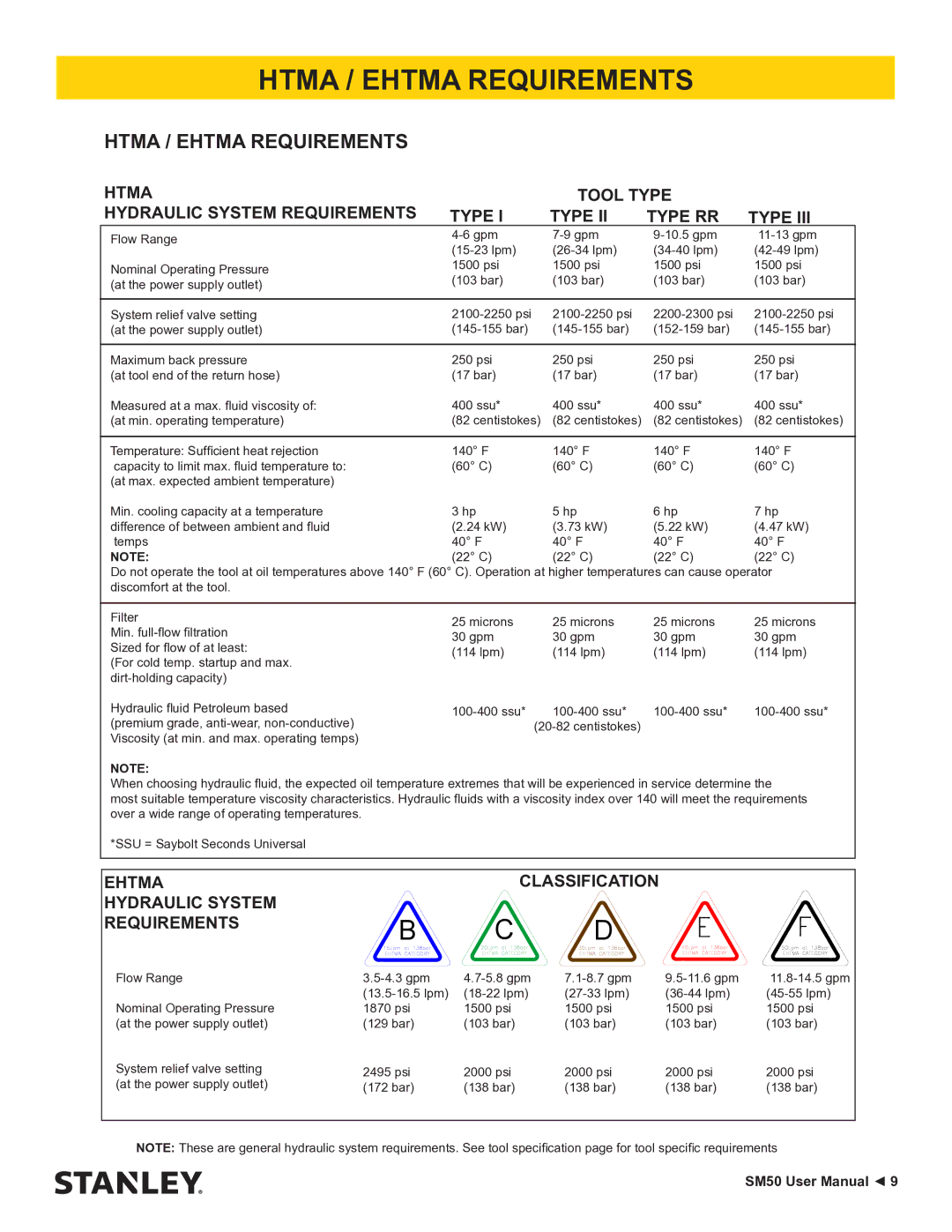SM50 specifications
The Stanley Black & Decker SM50 is a standout tool in the realm of portable staplers, designed to meet the demands of both professionals and DIY enthusiasts. Renowned for its exceptional performance and durability, the SM50 exemplifies Stanley Black & Decker's commitment to quality and innovation in every tool they produce.One of the defining features of the SM50 is its power. Engineered for heavy-duty applications, the stapler can effortlessly drive staples into a variety of materials, including wood, plastic, and even softer metals. This versatility makes it an essential tool for a wide array of projects, from home repairs to professional tasks in construction and upholstery.
The SM50 boasts a robust design that ensures longevity and reliability. Constructed from high-quality materials, it is built to withstand the rigors of daily use without compromising performance. The ergonomic grip of the device minimizes hand fatigue, enabling users to maintain accuracy and control during extended periods of operation.
In terms of technology, the SM50 incorporates advanced staple-loading mechanisms that facilitate quick and easy replenishment of staples. This feature enhances efficiency and allows users to maintain focus on their task without unnecessary interruptions. Additionally, the adjustable depth control ensures precise staple placement, accommodating different material thicknesses and project requirements.
Safety is another priority in the design of the SM50. It includes features that prevent accidental firing, providing peace of mind for users around sensitive areas or while working in a busy environment. The overall design is compact and lightweight, making it highly portable for use in various settings.
The SM50 is compatible with a range of Stanley staples, which are readily available in numerous sizes. This compatibility adds to the tool's versatility, catering to both lightweight and heavy-duty stapling needs. Furthermore, its low staple indicator alerts users when they are running low, promoting uninterrupted workflows.
In conclusion, the Stanley Black & Decker SM50 is a powerful, user-friendly, and reliable stapler that combines innovative technology with robust construction. Whether for professional use or home improvement projects, it offers exceptional performance while ensuring user comfort and safety. With its solid reputation and durable design, the SM50 is an excellent addition to any tool collection.

